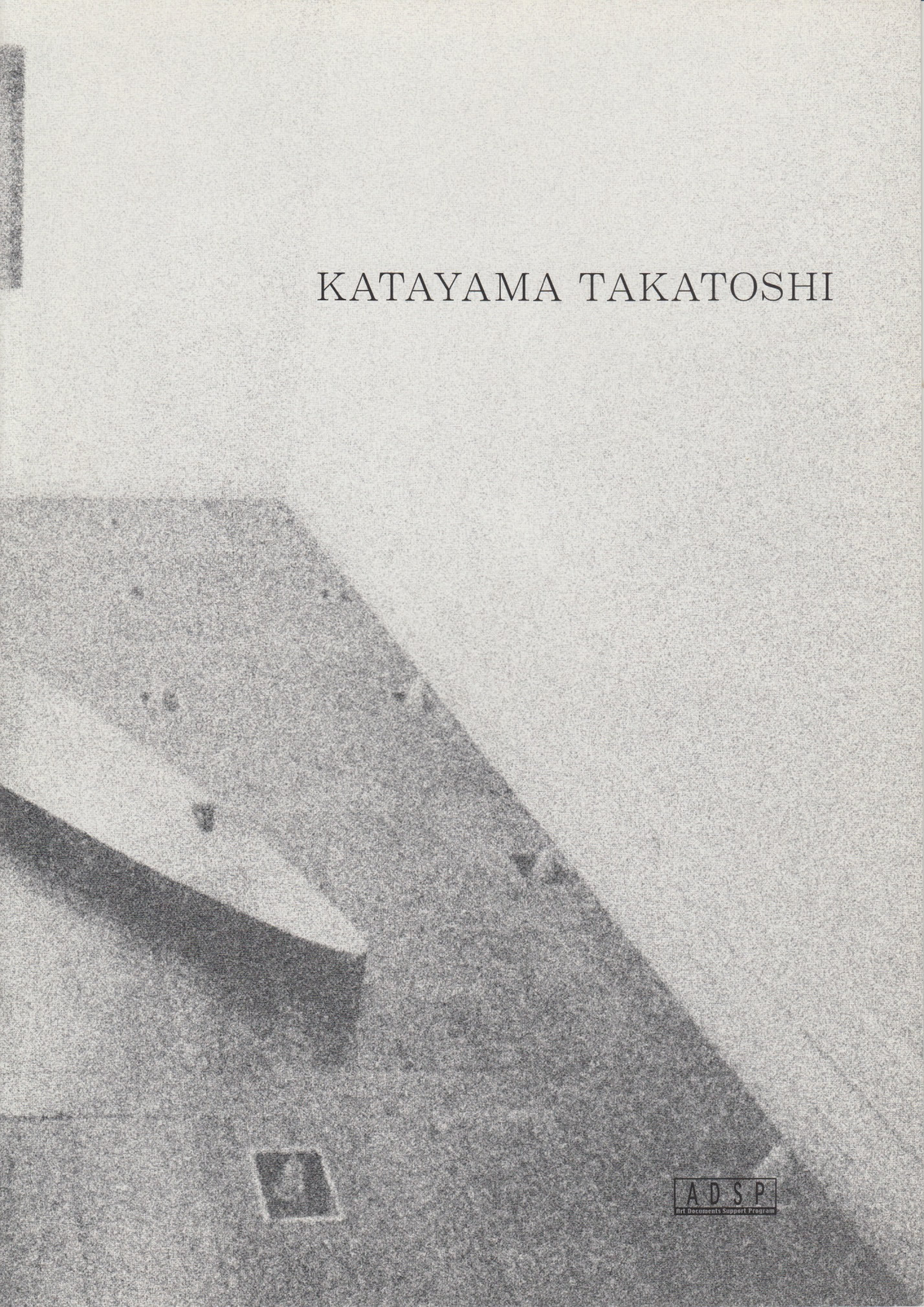Awajicho Gallery, Tokyo
31 Oct 2001 - 17 Nov 2001

What does “seeing” mean? Is it possible for us to just see, free from all our fantasies, beliefs,memories, knowledge, and experiences?
Katayama Takatoshi
For instance, when we happen to meet an acquaintance on the street, communication starts up based on our memories about that person. If our memories are vague, we might pass him or her by without recognizing them. Naturally and unconsciously, we depend on our memories in our daily lives. On the other hand, we are highly sensitive to the present “atmosphere” of a person. Even as we speak, “Hasn’t it been a while? How are you doing?” we think toourselves, “He’s gotten rather mild,” or “She looks worn out.” It may be caused by the sixth sense or animal intuition in us. Furthermore, our current mental state affects our reaction to the other person. Our conversation style would likely vary whether we are feeling good or bad. In fact, the impression we give to the other person, as well as our own views about that person changes every moment.
In a sense, we are in contact with the world through a double or triple filter that is composed of memories, emotions, and feelings. These filters constantly work as components for building an existence that is uniquely “me,” commonly called identity. They are also the main factors that individualize us, although they also hold the possibility for us to lose a direct feeling when we are in contact with the world. While it may not be the only cause, for example, some of us may look at reality as if it is some kind of a TV show, or we may get into a conflict by misinterpreting each other’s filters during mutual communication. Under complex and changeable situations in communicating with others, we are often confined by the identity we have consigned to ourselves, and we may possibly lose sight of our real selves, or become unable to keep balance with the outside world.
Mr. Katayama’s hometown is located in the outskirts of Numazu, a small coastal city in Shizuoka Prefecture. It only takes a couple of seconds to walk to the beach from his parents’house. There, fishery is prosperous, and it’s a kind of place where you can see folks making dried fish, and turning around, you can see a row of small mountains. By these descriptions, you would imagine there is a wealth of natural surroundings. On the contrary, a short walk in the opposite direction of the ocean would lead you to a rather stuffy road, narrow, but heavy with traffic. Moving further down the road in the direction of Mt. Fuji, you would see more and more tall buildings, as it takes you to the Numazu Station area.
The adherence to the ship form and water in Mr. Katayama’s works, the coexistence of nature worship and urbanity, and the way he retains balance between intention and contingency, unreality and reality, I suppose, has developed as a result of the environment in which he grew up.”By baking clay at a high temperature, the work acquires a unique texture that cannot be controlled intentionally.” His technique is in itself the realization of his sense of balance for establishing a real existence of himself in the world. In the works made through this technique, a kind of severity and an enormous capacity to embrace are both there. Instead of forcing the expression onto the viewer, they ask the viewer of a clear consciousness.
It is a feeling like standing alone amidst silent mountains. From a scenic point in the hills, you can see only the sky and mountains. Soon, the sun begins to slowly set beyond the distant mountains, and the surrounding scenery gradually gets dimmer. Beyond loneliness and fear, it is when memories and emotions are diluted, as the identity that constructs myself fades, and the filters between the surrounding scene and me melt away…No sound is heard. Still, I hear pure music called “silence.”
It is music like that I hear from Mr. Katayama’s works.
Morihide Sawada (Musician)